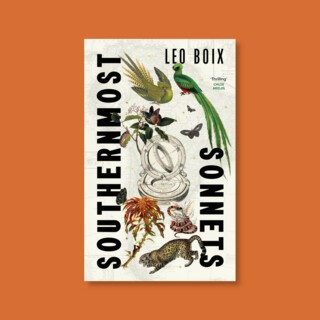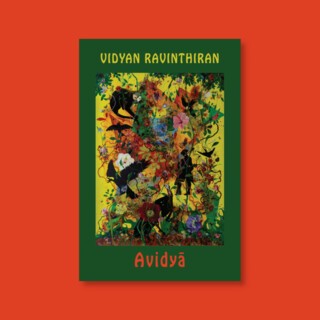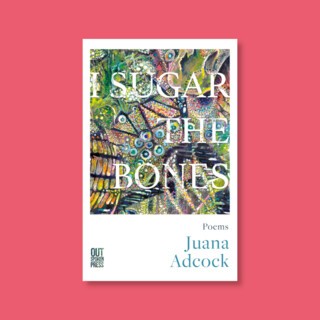
Suddenly straw bears are everywhere. The one that has been looming from our front window since the beginning of August was originally built to celebrate Tate Britain’s exploration of British Folk Art, in pale imitation of the magnificent straw King Alfred that takes centre stage in the exhibition (which, if you haven’t been yet, continues until 31 August). That creation was in part inspired by the wonderful creatures photographed in Charles Fréger’s Wilder Mann, out of print almost as soon as it was published in 2012 but recently, serendipitously, available again. And then rumour reached us that Iain Sinclair would be retracing the journey he made a decade earlier in Edge of the Orison, itself a retracing of John Clare’s Journey Out of Essex, this time accompanied by film-maker and Swandown collaborator Andrew Kötting, in full straw bear costume, for their upcoming film By Our Selves.
Kötting’s straw bear will be touring the nation in the coming months, but can currently be found accompanying our own straw creation in the front window, in the form of Anonymous Bosch’s fabulously atmospheric pinhole photos from the filming. Read on for Iain Sinclair’s despatch from the By Our Selves odyssey, originally published at iainsinclair.org.uk.
‘Get up, you maggot!’
‘He’s dead.’
‘It’s a reconstruction. In the wrong place.’
Toby Jones, fresh from acclaimed impersonations of Alfred Hitchcock and Truman Capote, sprawls in the gutter of a Stevenage foot tunnel, channelling John Clare. And resting his weary head on a portable typewriter. Words leak everywhere. Toby has gone to ground, without those fortunate trusses of clover, his head to the north, after the first day’s hallucinatory tramp, his escape from Dr Matthew Allen’s bucolic madhouse at High Beach, Epping Forest. More than twenty miles already achieved. Sixty hard miles ahead.
T-shirt youths echo the women of Stilton who discovered Clare ‘foot-foundered’ on gravel, and debated the validity of his collapse. The boys were right. This was a reconstruction in the wrong place. But not by much. Stevenage has time-travelled since that day in July 1841. It is now burrowed with underpasses, grassy knolls, social engineering. But somehow, at the end of that long day of guerrilla filming, we found the right spot. Sun low in the sky. Dog walkers, taking the fallen man in their stride, stopped to make conversation. Interchangeable mother and daughter leashed to a docile pack of hellhounds.
‘Have they renewed their marriage vows?’ Kötting asks, pointing to the panting senior-citizen canines.
‘They’re a lovely couple, but the old feller hasn’t shown any interest since she dropped the pups. Beautiful family, good as gold. But we can’t fetch the son out with us, his dad’s always trying to mount him. He’s a randy old devil.’
The incestuous theme chimes with our current project: a spoiled version of Hamlet, with the mute, infolded Toby, so precise and considered in gesture and frown, prodded forward and voiced by his father, Freddie, who played a memorably engaged John Clare, years earlier, for the BBC. Freddie is still replete with those Helpston songs and poems. Haunted by multiple identities, an actor’s fate.
Walks cross over earlier walks. Tracks vanish into prairies of oilseed rape. Pumping stations ghost as asylums. The Doom mural at Waltham Abbey, a Day of Judgement painting, Heaven or Hell, becomes a map of the motorway system. A ketamine headache for the Highway Planners.
‘The new road o’er the forest is the right one,’ Clare wrote. ‘To see red hell, and further on the white one.’
From the time when I limped into Glinton, at the finish of the walk in the footsteps of Clare’s Journey Out of Essex, recorded in my book, Edge of the Orison, I wanted to go back over this terrain for a film. There were photographic records of that walk in 2000, and unseen footage shot by Chris Petit of the first and last days, but no substantial piece in the mood of Herzog’s The Enigma of Kaspar Hauser. Nor was there likely to be. I chanced on Kötting’s This Filthy Earth, which was dressed with the gloriously toothless Dudley Sutton, and I thought he could do the job. We talked of it from time to time, but Andrew never found a way in until he noticed the photograph from Whittlesey Museum: a glowering minder and a chthonic, mud-and-twig Straw Bear. The absurdity, the savagery, the Beckettian possibilities of man and bear roped together, attracted him.
With just enough funding from the Arts Council (based on the promise of four ‘outcomes’, live performances), we took to the road. From Monday June 16 to Sunday June 22, the crew were out in the country, filming it as it happened.
I’d never collaborated before with a performer like Toby Jones, a man capable of anchoring the silence at the heart of the project with such measured forensic skill – and thereby giving Andrew licence to let the Bear caper and tug. The two men, figures from wildly different eras and traditions, wrestled in shamanic embrace beside the M25, and on solitary tracks between fields of ripening cereals. Bird whistles, provided by Jem Finer, haunted the night, in forest and roadside meadow. The crew – Nick Gordon Smith on camera, Philippe Ciompi drinking up sound with his furry proboscis, Anonymous Bosch pinholing portraits – were heroic (and proficient at muzzling ego for the general good).
What were the highlights? Whatever Kötting cuts together. Whatever strange sounds reverberate or clash.
A helicopter camera, like one of Matthew Allen’s watchers, pursues Clare as he flees the forest. Before it climbs vertiginously to reveal the dense canopy of the trees.
Toby lies beside a millstream in Pre-Raphaelite abandon. A passing walker is reminded of The Death of Chatterton by Henry Wallis.
A confused cyclist, heading straight back to London, swears that he is riding north. He mimics the disorientation Clare felt, that first morning, at Enfield, at the Labour in Vain public house, which has never been identified.
HGV cowboys honk and shout ‘Wankers’ from the M25 orbital ridge as Toby and the Bear trudge the margin of the hard shoulder, making for Stevenage.
Toby emerges from a clump of poppies, on the morning after the second day’s walk, across the motorway from an Adult Pit Stop. These sheds are a special kind of redundancy. They have replaced the old Happy Eaters and fast-food halts, but have stocked their shelves with specialist DVDs at a moment when the form looks antique.
Philippe disappears for hours to make recordings of the wails those giant propellers of wind farms do not make. The rest of us doze among the poppies.
In Potton, the librarian has never heard of Clare.
In Glinton, I discover the fire-scorched window where Mary Joyce, the muse who inspired Clare’s escape, was burnt. Her erased grave is now marked with a heritage sign.
Alan Moore, on a bench in a Northampton park, reads ‘I Am’ to the Straw Bear. MacGillivray keens a whispering lament. She drifts off among the trees.
The materials are all there. It begins to make a dangerous kind of sense. In whatever form it eventually takes.
For more on the film, follow @byourselves_




